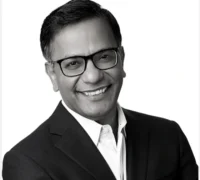
How to manage power dynamics in high-stakes negotiations
Former FBI agent Joe Navarro explains how to leverage non-verbal cues, manage power dynamics, and build trust to overcome deadlocks in negotiations....

by Sumeet Salwan Published July 31, 2024 in Leadership • 10 min read
The global M&A market seems to be hitting something of a stride in 2024, with a slew of megadeals – including a $35bn merger between Capital One and Discover Financial that could see the former become a formidable rival to Mastercard and Visa. In the first quarter alone, deal volume climbed 30% to just over $755bn globally. Meanwhile, EY is predicting a bumper year, with survey data pointing to a sizable upswing both in CEOs and private equity dealmakers looking to make acquisitions and divest assets.
Yet, even as M&A heats up around the globe, investors must know that they are taking a huge gamble. Study after study shows that most of these deals will fail, with one landmark report by McKinsey revealing that more than 70% of acquired companies fail to live up to their investment thesis – the value they’re expected to deliver post-deal. Little wonder that The Economist describes M&As as being akin to second marriages: “a triumph of hope over experience.”
So, what’s going on?
Pre-acquisition, brokers and dealmakers bend over backwards in their efforts to assess a prospective organization’s legal, financial, and commercial health. Market share, sales, growth projections, and regulatory compliance are all meticulously scrutinized. But one factor, one success criterion, determines any firm’s future performance and its ability to truly transform, shift, and adopt new directions: talent.
If you’re acquiring a company, essentially you are investing in the future value that you expect the company to create in the coming months or years. This is your investment thesis. Your investment thesis will likely deviate in some way (in many ways, even) from the pathways well-trodden until now. You and your co-investors will be looking to pinpoint and realize what I call value hotspots – those areas in the organization where value is currently trapped or underleveraged, and wholly new, exciting opportunities to bend the growth curve.
Now, to leverage your value hotspots you need the right talent in situ. You need leaders and decision-makers with the right capabilities, mindset, energy, and engagement, in the right parts of the organization, to transform potential into real value creation. You need to be able to map existing talent to future value. Let me put that another way: you need to know whether the organization as it stands is talented enough to deliver the value in your thesis. And this isn’t easy.
Asking someone who has founded or built up an attractive business whether they’re “good enough to deliver your thesis” is the very antithesis of courtship.
As The Economist put it, mergers and acquisitions are like marriages. Sure, there are things that you can determine about a potential partner crisply and rigorously but with relative ease – your commercial and financial diligence, let’s say. But when it comes to the truly personal stuff – your partner’s talent and capabilities – the same rigor can feel intrusive; it can feel overly intimate or prying.
Asking someone who has founded or built up an attractive business whether they’re “good enough to deliver your thesis” is the very antithesis of courtship. It’s like slapping a prenup on the table, right as you’re making wedding arrangements and honeymoon plans.
Talent diligence is hugely challenging because it is so personal. How do you weigh up a leadership team against your value creation expectations without killing at least some of the passion? How do you assess capabilities, mindsets, energy, and engagement across those all-important value hotspots without giving someone cold feet? How do you assess intimate, personal qualities and talent without someone turning around and calling the whole thing off?
In my work with thoughtful CEOs, investors, and deal partners who are navigating this minefield on both sides of the divide, I’ve found this: if you want to do talent diligence just as rigorously and successfully as the diligence you perform across all other measures of a company, there are four simple but critical steps you have to take. The first is connecting talent to value.

“Where are the five or six opportunities that can supercharge this company’s future growth?”
Figuring out your thesis, your value hotspots, and how they connect to the people, roles, and the capabilities you need, means finding the answers to some important questions. Among them:
Where are the five or six opportunities that can supercharge this company’s future growth?
Which are the key roles where most of the work will be done in translating these opportunities into real value? Are there five, 10, or even 15 roles outside the senior leadership team that will come into play too?
Is there anything about the way the company is currently run that could hamper work at these key value hotspots?
What are the critical functions and organizational capabilities that must come to the fore to realize this value transformation?
Start in the data room. Here you will find an abundance of information from your other, ongoing diligence streams to answer the questions above. Study the organizational chart and work through all the available financial, product, and market data to build a simple one-page value agenda; one that captures these myriad insights into the five or six value hotspots that make up your overall investment thesis.
Now you can start to pinpoint the work that will need to be done to light up the value at these hotspots and identify the talent you need to perform the work–as well as any gaps or risks that might derail your value agenda.
Let’s say you’re evaluating a firm that manufactures branded plant-based foods. Right now, the firm is doing well selling a vegan alternative to cheese, but your investment thesis hinges on making greater inroads into the plant-based meat market where there is a $500m growth opportunity. Meanwhile, overall sales are strong but plateauing in the US and the UK; however, the data shows that demand for plant-based food will likely surge in Europe in the next three years. Your new value agenda anticipates a strong European launch. Now, the organization has phenomenal cost discipline but, in the process of cutting overheads, it has shrunk its marketing team too much. In this scenario, you may need stronger innovation and R&D capabilities to develop your plant-based cheese products and ensure quality.
You’re now in a better position to know if you have the right strategic talent to deliver this opportunity, or if you need to ramp up certain things: consumer insights, say; marketing; or customer-facing digital capabilities. Do you have the right decision-makers in place to make this happen? What about the future costs here – how will they impact your price offer for the deal? And what about breaking into new geographies or markets to create value? Do your key leaders have what it takes to drive global growth, or are there mindsets, biases, and beliefs that might delimit their aspirations – and stymie your thesis?
Now you have mapped your investment thesis and value hotspots to your future talent needs, it’s time to sit down with the key decision-makers you will want to be in situ going forward. The good news is Step 1 will have provided you with a strong framework for these conversations. But before you talk, you still need to reflect on what you want from the exchange – and what you don’t want.
Your goal here is to get under the hood and answer a very important question: is this organization talented enough to deliver the thesis? Your goal is not to unsettle people, put them on the spot, and jeopardize the positive energy you all need to get this deal across the finish line.
In my work with clients on both sides of the table, I’ve found that the best approach is to frame these critical touch points as open conversations about their business, and not job interviews for roles that they have performed successfully till now! Instead of grilling these leaders about their strengths and weaknesses, ask them questions about the organization they have built and led – and the future that they envision for it.
You will want to understand their vision for the business and, naturally, how committed and capable they feel about realizing that vision. And you will want to see the extent to which their thinking aligns with your own. Try asking open questions such as:
What needs to happen for this company to double in value?
Where are there likely to be obstacles in getting to these things?
If you could ramp up the capabilities of this company to overcome these obstacles, where would you focus?
Remember, you want to unearth high-quality insights about the organization’s talent and capabilities to deliver the thesis. If commercial diligence is about customers and pipelines, and operational diligence is about efficiency and operational excellence, then talent diligence is about the organization’s strengths and ability to pinpoint opportunities to deliver value. The last thing you want to do is cause personal affront to the leaders who have built the company over many years. Yes, you need to pinpoint potential blind spots or gaps, but a constructive approach is to think of these conversations as a means of testing how aligned you are in your thinking and capabilities. Think of them as a way of testing the chemistry between you.
What is working well with the organization, particularly in those functional areas that are a priority for your investment thesis?
Of course, you’re likely to be very limited in the time and access you have to the leadership team, so what else can you do to build your insights and understanding of the organization’s talent?
Getting talent diligence right means doing diligence on as much available data as possible. This means leveraging and scraping all internal and external sources of intelligence that can afford you critical insights.
Build a multi-source mosaic of your executive team and the organizational functions they lead by triangulating data scraped from the other diligence streams being conducted. You will also want to parse things like employee questionnaires and pulse surveys, plus any feedback from clients and other stakeholders. Your goal is to build as comprehensive a picture as possible from within the organizational ecosystem of:
There is also likely to be a wealth of information available to you in the public domain that will help you construct as comprehensive a picture of your critical talent as possible. Look to whatever is publicly available and where necessary forge partnerships with industry experts for more textured intelligence and analysis. AI advances and public information scraping tools including the ubiquitous LinkedIn can already connect the “jobs to be done” for your critical role with the existing talents and skill sets. Are they perfect? Of course not. But each one of these is a great way to build an evidence mosaic in a world of limited access and the pressing need to depersonalize talent diligence.
The key to all of this is to exercise a good deal of critical thinking as you integrate data from diverse sources and to be on the lookout for patterns as the fuller picture starts to emerge.
It’s not so much of a fourth step as a rule of thumb. Remember, there’s one thing that will determine a company’s future success more than any other, and that is its talent. Firms will routinely spend up to 1% of the potential deal value on diligence and generate reams and stacks of data on every aspect of the company. However, they remain hesitant to spend a fraction of that money, time, or resources on effective talent diligence.
When you are buying an organization, more than anything, you are acquiring and investing in its talent. Talent diligence, as much as financial, legal, and commercial diligence, should be a mainstay routine in your assessment and evaluation routines, and not something that feels nice (or not) to do (or not.)
The M&A market is expected to surpass $2.5tn by the end of 2024, yet there are no concrete guarantees that Walmart, Capital One, and the like will see the kinds of returns that their investment theses predict.
Whether these second marriages thrive remains to be seen; historically the odds are against them. If decision-makers forging these and other megadeals have been diligent about talent, though, there’s every reason to be optimistic that experience may yet triumph over hope.

Co-founder CEO.works
For over 30 years, Sumeet Salwan has been developing innovative human capital strategies and practices that organizations of all sizes can adopt to drive value creation. Salwan co-founded CEO.works in 2018 with a mission to help leaders assess and deploy talent to meet their strategic goals. Previously, Salwan was the Global Head of HR for Johnson & Johnson’s medical device and consumer sectors. Before this, he spent 22 years at Unilever, progressing from an intern in Mumbai to the Head of HR for North America.

May 6, 2025 • by Anna Cajot in Competitiveness
Former FBI agent Joe Navarro explains how to leverage non-verbal cues, manage power dynamics, and build trust to overcome deadlocks in negotiations....

April 24, 2025 • by Jerry Davis in Competitiveness
Many regional developers have tried and failed to emulate Silicon Valley’s VC-driven model for innovation. Detroit, the birthplace of Ford, is following an alternative route – with promising results....
 Audio available
Audio available
April 16, 2025 • by Benoit F. Leleux in Competitiveness
How a private equity-backed corporate carve-out created a successful, sustainable consulting powerhouse...

April 11, 2025 • by Jim Pulcrano, Jung Eung Park, Christian Rangen in Competitiveness
Founders searching for funding must be targeted in their approach to securing a lead investor. A global survey of VCs offers valuable insights into what makes them tick....
Explore first person business intelligence from top minds curated for a global executive audience